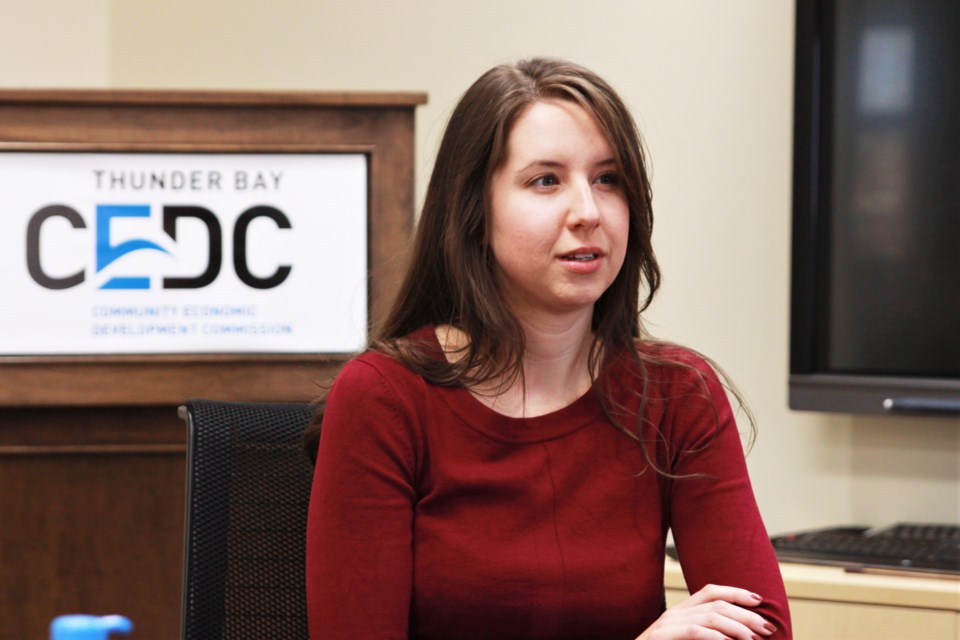THUNDER BAY – A chronic shortage of family doctors remains an acute problem in Thunder Bay, despite ongoing efforts to recruit and retain more physicians in the city and broader region.
Despite an injection of new graduates from the Northern Ontario School of Medicine (NOSM) and other recruitment strategies, the number of local residents without a family doctor has hardly budged in the last decade.
Approximately 20,000 people in Thunder Bay - nearly one in five residents - still lack a primary health care provider, according to estimates from the city’s Community Economic Development Commission (CEDC).
The number was estimated at between 18,000 and 20,000 by the city in 2010.
The continuing gap can largely be explained by retirements, a trend toward smaller patient rosters, and the challenges of launching a family practice, say health experts in the region.
A 2018 report from the Northern Physician Resources Task Force says the general trend of an aging physician work force is even more pronounced in northern Ontario, with a higher percentage of doctors poised to retire in the next several years.
Lexie Penko, community health sciences recruiter with the CEDC, expects at least 10 to 15 local family physicians to retire over the next decade or so.
Those retirements have an outsized impact, because most new family doctors take on far fewer patients than those retiring out of the system.
New doctors might take on a roster of 1,000 to 1,500 patients, whereas more established ones tend to have 2,000 to 3,000, Penko estimates.
She puts that down largely to a generational shift in how doctors are approaching the job, saying many younger physicians put a high priority on work-life balance.
Dr. Sarah Newbery, a family physician in Marathon and Assistant Dean, Physician Workforce Strategy at the Northern Ontario School of Medicine (NOSM), agrees. She says it’s a trend driven in part by the entry of more women into the profession.
“For some women, although not all – and certainly for some men, too – there’s a desire to have better work-life balance, in order to be able to be present with families,” she says. “We’re seeing that broadly with new graduates.”
Both Newbery and Penko note that the trend toward smaller rosters can have benefits for patients, too, often leading to shorter wait times for appointments and allowing doctors to spend more time with patients.
Still, the trend intensifies the need to recruit more doctors to the North.
It’s a problem that could be significantly worse without the presence of NOSM – the school has touted its success in retaining over two-thirds of its graduates in northern Ontario.
However, Newbery acknowledges the fundamental problem remains largely unchanged, despite the school’s efforts since launching in 2002.
“I think what we’ve seen since then is not a huge shift in our physician resources across northern Ontario, although many, many graduates of NOSM have stayed.”
The school is set to launch its new strategic plan in November, which Newbery said will contain major strategies related to physician recruitment and retention in the region.
However, she believes a larger “system restructuring” is needed in the health care sector to truly move the needle. The traditional GP model puts heavy demands on physicians, she says.
“It’s very rewarding, but comprehensive family practice asks a lot of physicians – they have to be employers, manage human resources, and run practices.”
Those demands have only grown in recent years, she says. Since NOSM welcomed its first class in 2005, many doctors are also contributing teaching time on top of their other duties.
“More and more, there’s work that’s kind of on the side of physicians’ desks that they’re being asked to do – and in many instances, want to do – but the challenge is finding the time to do that as they manage their clinical practices.”
That leads many graduates to look instead at becoming specialists or hospitalists, Newbery says.
Newbery sees solutions in emerging models like family health teams, in which other health care professionals can take what she describes as “lower scope of practice work” off doctors’ plates.
“It’s not particularly helpful for me to do routine PAP tests – you don’t need a physician to do that,” she explains. “I should be working at the higher end of the spectrum of patient complexity, making diagnoses, doing the more complicated prescribing – that kind of thing.”
The health team model can support more people to access a family physician, she says, even if more of their care may be performed by a physician assistant or registered nurse.
The model has found a foothold in Thunder Bay at clinics like the Harbourview Family Health Team and Fort William Family Health Team.
The CEDC runs several programs aimed at boosting physician recruitment on behalf of the city. Those include marketing campaigns promoting the city, working closely with NOSM students, and financial incentives for candidates and local physicians who can help recruit peers to come here. Those efforts are largely focused on major Canadian centres like Toronto and Vancouver.
It’s personal relationships with the city and people here that tend to prove most effective, Penko says.
Over the past decade, Thunder Bay has seen 54 new doctors go into family practice, according to CEDC data - the overwhelming majority of whom are either from the region or trained at NOSM.
“General practitioners that are interested in practicing in Thunder Bay almost always have some sort of personal connection to the community," says Penko. "They may be from here or have roots here.”
